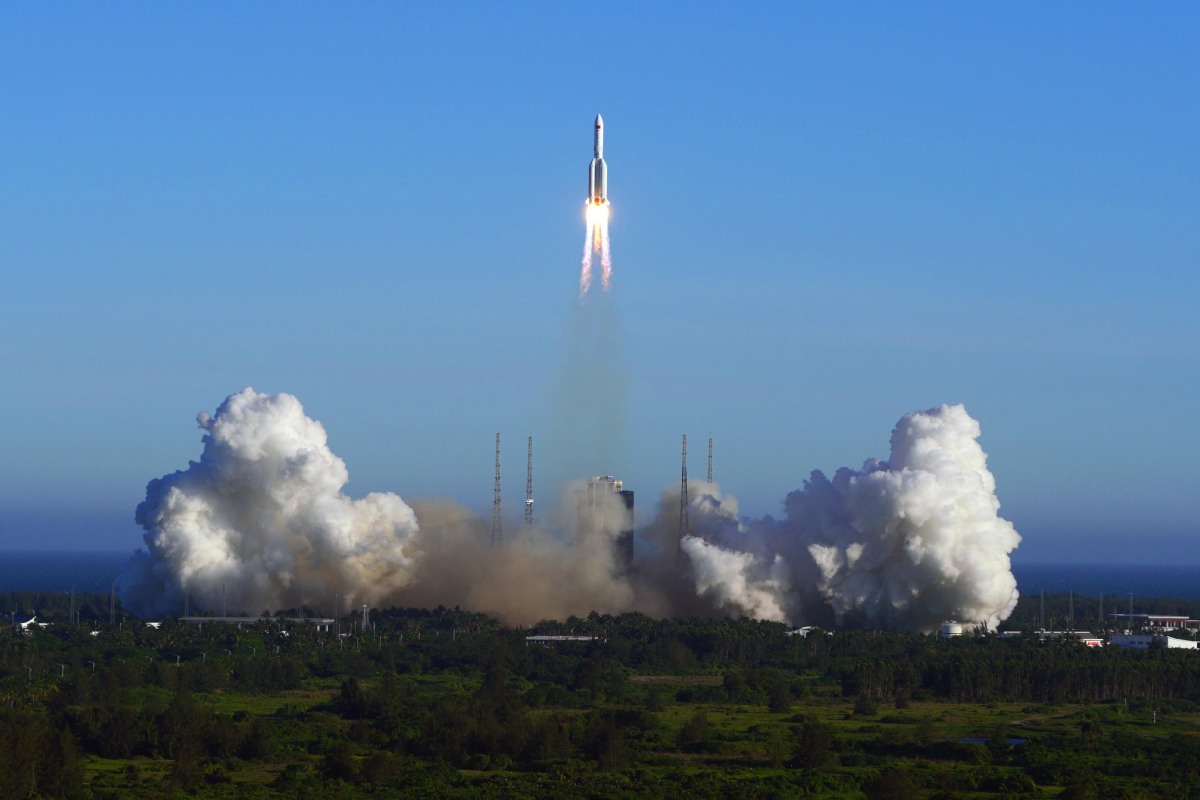Spacecraft prototype starts first flight-tests
By Zhao Lei | China Daily | Updated: 2020-05-06 09:00
Vehicle will assist with construction of nation's space station and future lunar missions

China has begun flight-tests of its new-generation manned spacecraft that will serve the country's future space station and lunar landings, according to the China Manned Space Agency.
The new spacecraft's first prototype was lifted into low-Earth orbit by the maiden mission of China's Long March 5B heavy-lift carrier rocket on Tuesday evening from the Wenchang Space Launch Center in Hainan province, the agency said in a statement sent to China Daily.
It said the flight was intended to verify key technologies and equipment for the new spaceship including devices for heat-resistance, control and recovery, adding the test results will be used for further improvements.
The statement noted that once put into formal service, the new manned spaceship will feature world-class designs and technologies, high reliability and flexibility, reusability and multiple functions.
It will consist of two major parts — a re-entry module that will house astronauts and serve as the control center for the entire craft during a spaceflight, and a service module that will contain power and propulsion systems.
The new spaceship will have a length of nearly 9 meters, a diameter of 4.5 meters and a payload of 22 metric tons.
It will be tasked with serving the construction and operation of China's future space station as well as the country's manned lunar missions that are being planned by scientists, the agency explained.
Designers at the China Academy of Space Technology in Beijing said that compared with the Shenzhou series, the country's operational crewed spacecraft family, the new model will be capable of conducting longer missions, housing more astronauts and cargo, and operating in a tougher environment.
For instance, it will be able to accommodate up to seven astronauts while the Shenzhou can carry at most three. It can transport large amounts of materials between Earth and a space station, a function Shenzhou does not possess.
The new spaceship will also boast better working and living quarters than those in Shenzhou. There will be specific areas inside it for astronauts' mission control, dining, entertainment and personal hygiene, making their journey more comfortable, designers said.
"The new-generation manned spacecraft will assist many ambitious plans of Chinese scientists such as placing Chinese astronauts on the moon," said industry observer Xing Qiang, founder of Micro-Rocket Union, a nonprofit space research organization in Beijing.
All three space powers-China, Russia and the United States-are developing new manned spacecraft. The US is building the Orion Multi-Purpose Crew Vehicle, Dragon 2 and CST-100 Starliner, and Russia is working on its Oryol spacecraft.
China's Shenzhou spacecraft have carried out 11 flights since November 1999 when the Shenzhou I was launched. The first four Shenzhou spaceships did not carry astronauts because they were experimental. Shenzhou V fulfilled the country's first manned spaceflight in October 2003. So far, the series has made six manned spaceflights, sending 11 Chinese astronauts into space.
























